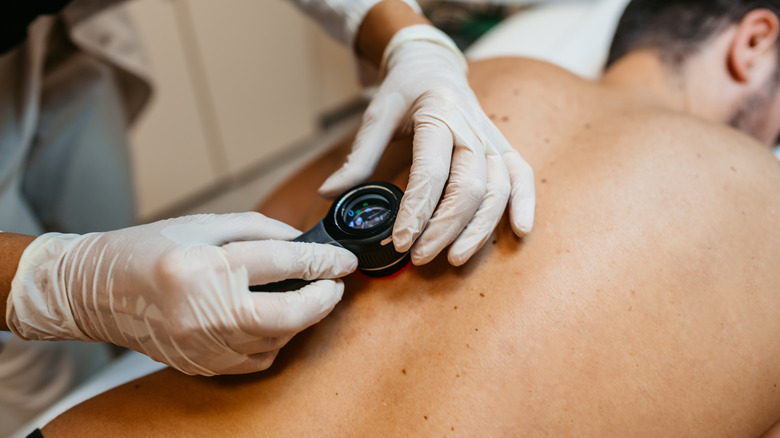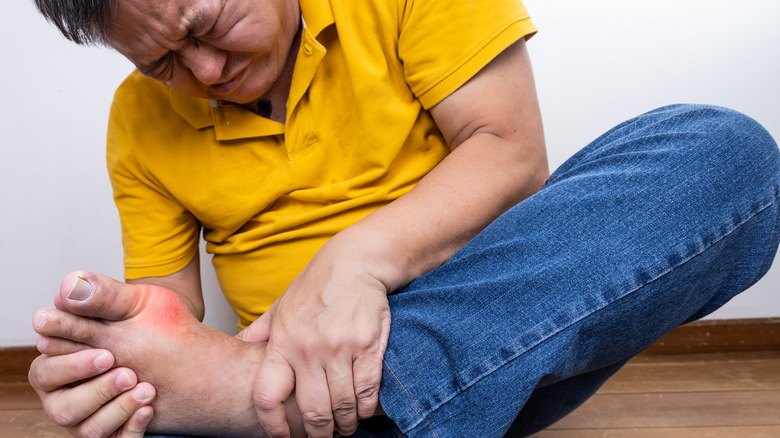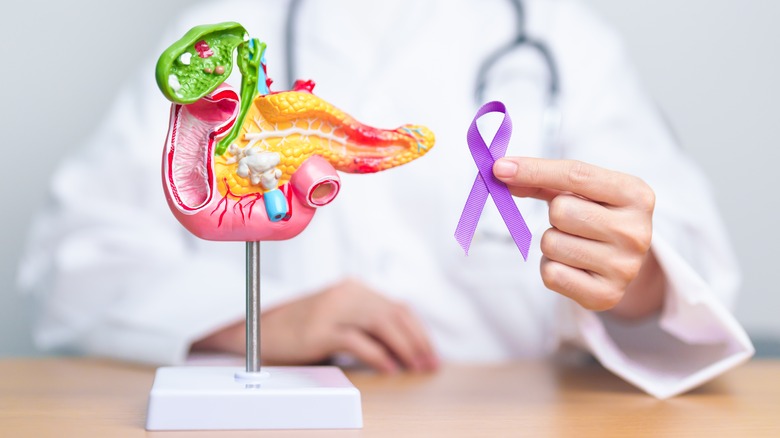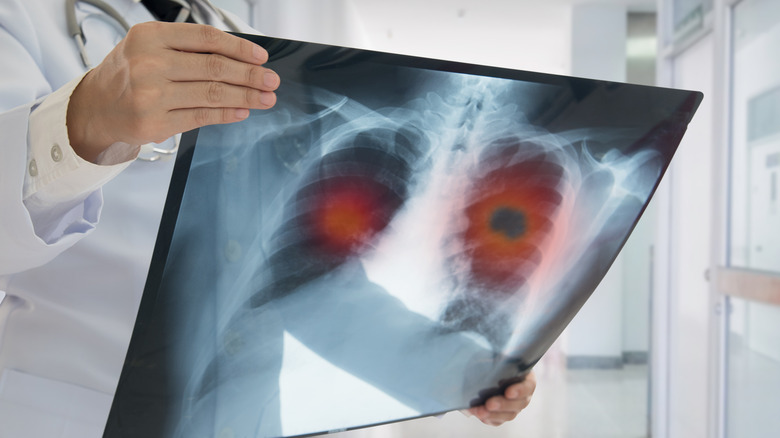Diseases Men Are More Likely To Get Than Women
Being assigned male or female at birth can have a direct effect on which diseases you are most likely to develop, how they manifest and evolve, and even whether you'll want to get treatment, and this is all due to the influence this has on your health.
On the one hand, according to a review published in Biomedicines, biology can affect disease susceptibility due to changes in genetic and hormonal factors. For instance, since many genes that influence immunity are located on the X chromosome (which women have two of), women generally have stronger immune responses than men, which can make them more resistant to infections but also more prone to autoimmune diseases. Similarly, hormones (e.g., androgens, estrogens, progesterone) may protect or predispose against health conditions.
On the other hand, the World Health Organization (WHO) explains the role gender plays in the equation. Gender and its assigned roles, norms, or expectations may provide context to better understand the differences. For example, when looking at gender-specific behaviors, evidence shows that men tend to engage in riskier health behaviors like heavy alcohol intake or smoking, increasing their risk factors for noncommunicable diseases, such as heart disease and cancer. Understanding these disparities may help create targeted prevention strategies to improve everyone's well-being. In the meantime, here's a list of diseases that men are more likely to get than women.
Autism
Autism spectrum disorder (ASD) is a neurodevelopmental condition, meaning that it affects how the brain grows and works. Despite having numerous symptoms, it is characterized by two main signs: difficulties in social interactions and repetitive and restricted interests and behaviors (via the Autism Research Institute). According to a review published in Plos Biology, while there's no known cause for ASD, there is a well-known and strong bias towards people assigned male at birth (AMAB), with as many as four people AMAB being diagnosed with the disorder for every one person assigned female at birth (AFAB) with the condition, and scientists have come up with multiple hypotheses aiming to explain the disparity.
One is the extreme male brain (EMB) theory, which states that people with ASD usually show an extreme of what's believed to be the male profile, in which the brain has a stronger urge to systemize, analyze, or construct rule-based systems rather than empathize, a quality described as a female profile. This theory claims that high fetal testosterone levels may cause the brain to shift towards the male profile. On a similar note, another hypothesis suggests that the prenatal hormonal changes leading to ASD happen because the placenta produces too much estrogen, ultimately affecting brain development and function in people AMAB (via Psychology Today). Lastly, a study published in The American Journal of Human Genetics proposed that the female brain provides a protective effect against the mutations that lead to ASD because it likely needs to have more severe genetic changes to be affected.
Melanoma
Melanoma is a type of skin cancer characterized by the formation of atypical moles, whether by changes in an old one or the growth of a new one, often with an asymmetrical shape or unusual color (via the Mayo Clinic). Researchers believe that exposure to ultraviolet (UV) light is the main cause of the mutations leading to melanoma. The sun is the biggest source of natural UV light. Yet, artificial sources include tanning beds and UV lamps. While tanning may generally be considered a female behavior, the American Academy of Dermatology Association (AAD) says that people AMAB are twice as likely to develop and die from this type of sun damage-induced skin cancer.
One potential reason is that people AMAB are less aware of the negative effects of sun exposure, which means they are less likely to protect their skin with sunscreen or clothing. On that note, dermatologist Dr. Neal Schultz explains via The CUT that people AMAB might also have a behavioral bias against applying sunscreen, which might be perceived as feminine. However, the AAD proposes a second theory that states that the skin in people AMAB is different than that of people AFAB by not only being thicker but having less fat and more collagen and elastin, a combination of factors that might make it more prone to UV damage. The good news is that melanoma can be easily prevented by avoiding sun exposure during peak UV radiation hours, wearing protective clothing, and using broad-spectrum sunscreen with a high SPF (via Cancer Research UK).
Parkinson's disease
Parkinson's disease is a brain condition that affects the cells that produce dopamine. While many think of dopamine solely as the chemical responsible for the pleasure and reward systems in the brain, it is also the messenger in charge of regulating muscle movement. Therefore, when the dopamine-producing cells in your brain become rapidly damaged or die, the tremors, stiffness, and other symptoms of PD start to become noticeable. Moreover, PD is a progressive disease, meaning that it develops gradually but worsens with time. Despite age, genetics, and environmental causes being potential triggers for the condition, people AMAB are more susceptible to it than people AFAB (via Johns Hopkins Medicine).
One review published in The Journal of Parkinson's Disease offers some potential explanations. On the one hand, it mentions that people AMAB have a higher exposure to environmental risk factors associated with PD. For starters, it notes that by having high job demands, they are constantly exposed to chronic stress, one of the leading environmental risk factors for the condition. Additionally, the review mentions that increased exposure to pesticides, solvents, and heavy metals, all of which are common in male-led occupations such as farmers, woodworkers, painters, and metallurgists, also increases the risk of PD. Yet, on the other hand, there seems to be a hormonal factor at play: The female hormone estrogen may have a protective effect against PD. Thus, people AMAB, having lower estrogen levels, lack this protective factor compared to people AFAB.
Gout
Gout is an inflammatory condition that affects the joints, with a distinct preference for the one in your big toe. It happens when there's a buildup of uric acid in the body, which leads to the formation of sharp, needlelike crystals that lodge in the joints, causing the intense pain and inflammation characteristic of a gout attack (via the Mayo Clinic). People AMAB are more prone to developing gout than people AFAB, especially at a younger age or before people AFAB reach menopause, suggesting a hormonal explanation behind the tendency.
Per a study published in Scientific Reports, scientists used to believe that estradiol (a form of estrogen produced mainly in the ovaries) can inhibit the enzyme that produces uric acid in the liver, offering a protective effect. This would explain why, during adolescence, people AFAB, who go through a surge of estradiol levels, have lower uric acid levels compared to people AMAB. However, the study concluded that the difference was, in fact, due to higher testosterone and lower hormone-binding globulin (SHBG) levels in people AMAB. On the one hand, they determined that testosterone stimulates the said uric acid-producing enzyme. On the other hand, a reduced amount of SHBG to bind to testosterone and lower its availability further contributes to excessive uric acid production. Luckily, lifestyle factors such as limiting alcohol intake, maintaining a healthy weight, and reducing intake of some foods and beverages can help lower uric acid levels to prevent a gout attack (via the Mayo Clinic).
Pancreatic cancer
Pancreatic cancer begins in the pancreas, the organ in charge of producing digestive enzymes and insulin, meaning that it plays a key role in digestion and blood sugar management, accoirding to the American Cancer Society (ACS). This type of cancer is usually diagnosed when it has already spread, significantly limiting its treatment options and explaining why it tends to have a low survival rate (per Johns Hopkins Medicine). Moreover, people AMAB have a slightly higher chance of developing this cancer than people AFAB, and research attributes the difference to lifestyle-related risk factors.
Per the ACS, modifiable risk factors for pancreatic cancer include smoking, diabetes, chronic pancreatitis, and exposure to cancer-inducing chemicals. The site also mentions a link between heavy drinking and cancer. Thus, according to a study published in Epidemiology, one potential explanation is that people AMAB tend to smoke more cigarettes and be diagnosed with diabetes mellitus, and the risk seems to skyrocket for African Americans. Per the National Institute on Drug Abuse (NIDA), one reason why people AMAB smoke more is because cigarettes have a more significant effect on their reward system. As for heavy drinking, the Centers for Disease Control and Prevention (CDC) states that people AMAB are more prone to engage in excessive drinking than people AFAB, further increasing the risk of pancreatic cancer.
Amyotrophic lateral sclerosis (ALS)
Amyotrophic lateral sclerosis (ALS), which some know as Lou Gehrig's disease, is a condition that gradually worsens with time and affects the nerve cells in the brain and spinal cord that control voluntary muscle movement. Over time, the nerve cells deteriorate, causing muscle weakness and eventually paralysis (via the CDC). Per the ALS Association, people AMAB have a 20% higher risk of developing ALS than people AFAB, although the gap appears to narrow with age.
The exact causes of the disease remain largely unknown. However, potential environmental risk factors include exposure to heavy metals, pesticides, and repeated head injuries (via the National Institute of Neurological Disorders and Stroke (NINDS)). Yet, a review published in Clinical Epidemiology explains that both occupational and environmental factors might be at play. For example, ALS seems to be common among professional athletes, namely football or soccer players, who are exposed to strenuous physical activity, repeated head injuries, illicit performance-enhancing drugs, and chemicals used to treat the fields, all of which might explain the increased risk. Additionally, workers in other male-dominated professions, such as carpenters, welders, construction workers, electrical workers, and machine assemblers, among others, have been identified as having an increased risk of ALS due to exposure to the previously mentioned environmental risk factors and electromagnetic fields. Nonetheless, the evidence is still inconclusive.
Aortic aneurysm
An aortic aneurysm happens when a bump or bulge forms in the wall of the aorta, your body's largest artery. It gets its full name depending on where the bulge is located. For instance, if it happens in the chest, it is called a thoracic aortic aneurysm, whereas one that forms in the stomach area is known as an abdominal aortic aneurysm. Aortic aneurysms weaken the walls of the blood vessels, and if they get too big, they can burst, causing a life-threatening complication (per the National Heart, Lung, and Blood Institute (NHLBI)). According to the National Library of Medicine (NLM), abdominal aortic aneurysms are more likely to develop in people AMAB, especially if they're over 65 years old.
One potential reason for the heightened risk could be explained by the structural differences in the aortic walls of people AMAB, which have a proportion of elastin, collagen, and vascular smooth muscle cells that make them more likely to stretch and bulge (via Vascular News). However, there seems to be a hormonal factor at play as well. According to a study published in the Journal of Vascular Surgery, though still unclear, the reduction in testosterone levels typically seen in older people AMAB might hint towards a possible cause. Moreover, animal research found that males' bodies produce an inflammatory response on the aortic wall that promotes aneurysm development and enlargement, whereas females showed a protective antiinflammatory response. However, further research in humans is needed to understand these differences fully.
Kidney stones
Kidney stones are literal stones made of minerals, such as calcium, oxalate, and uric acid, that form in your kidneys when your urine levels of said minerals are too high, which causes them to crystallize and clump. They vary in size and shape and might cause a lot of pain when passing through the urinary tract (via the Mayo Clinic). According to an article in Nephrology Dialysis Transplantation, people AMAB are not only more likely to develop kidney stones than people AFAB, but they also have twice the chance of having a symptomatic or painful first experience.
One reason for the increased risk is that people AMAB have naturally higher levels of calcium, oxalate, and uric acid in their urine. This, together with a lower urine volume from not drinking enough water and a higher urine acidity, easily leads to a stone-prone urinary profile. In addition, the article states that animal studies appear to hint towards a potential hormonal bias caused by the effects of testosterone on urine oxalate levels. However, more research is needed to understand this theory better.
Luckily, kidney stones can be prevented with a few lifestyle changes. For starters, staying well-hydrated is crucial to help dilute the urine and keep the minerals from clumping (via the Mayo Clinic). Also, people with a history of kidney stones may benefit from reducing intake of oxalate- or calcium-rich foods and supplements, depending on the mineral that caused the stones to form.
Heart disease
Heart disease refers to numerous conditions that affect how the heart and blood vessels work, including conditions like atherosclerosis, coronary artery disease (CAD), heart attack, arrhythmia, heart failure, valvular heart disease, cardiomyopathy, myocarditis, and pericarditis (via Healthgrades). Per the CDC, people AMAB are not only more likely to develop heart disease than people AFAB, but they are also more likely to die from it, and this can be attributed to the fact that they are also more likely to tick more risk factor boxes, which include having high blood pressure, diabetes, being overweight, drinking heavily, smoking, following an unhealthy diet, and leading a sedentary lifestyle.
Starting with high blood pressure (one major risk factor), the site shares that as of 2016, 46% of people AMAB in the U.S. had a positive diagnosis. This could be explained by the fact that they're more prone to dealing with higher levels of stress and anger, increasing the risk of a heart attack (via WebMD). Plus, people AMAB are also more likely to smoke and engage in excessive drinking compared to people AFAB. Fortunately, most cases of heart disease can be prevented by getting regular medical check-ups and making a couple of lifestyle changes, such as following a heart-healthy diet rich in fruits, vegetables, lean proteins, whole grains, and healthy fats, exercising regularly, quitting smoking, managing stress, and drinking in moderation (via Healthgrades).
Lung cancer
Lung cancer originates when abnormal cells in your lungs grow out of control. After skin cancer, this is the most common type of cancer diagnosed in the U.S., and it is the leading cause of cancer deaths. In fact, according to the ACS, more people die from lung cancer per year than from colon, breast, and prostate cancers altogether. According to a study published in Cancers, people AMAB have an increased risk of developing and dying from lung cancer than people AFAB, and there are also differences in treatment response. This seems to be due to a mix of biological, genetic, and environmental factors.
On the one hand, the hormones estrogen and testosterone may influence lung cancer development. Per the study, while it is unclear whether estrogens promote or hinder lung cancer in people AFAB, high testosterone levels in people AMAB have been associated with increased lung cancer risk. Moreover, due to genetic differences, people AFAB have a more robust immune system that protects them against lung cancer. As for environmental risk factors, one of the most significant ones for this cancer is smoking, and people AMAB are not only more prone to do so more often, but the study shares that among smokers, people AMAB are more likely to get a positive lung cancer diagnosis, likely because smoking has adverse effects on the immune system. To significantly reduce the risk of lung cancer, quitting smoking is a great place to start.
Type 2 diabetes
Type 2 diabetes is a metabolic condition that affects how your body manages your blood sugar, eventually causing it to spike. It happens either because your pancreas doesn't make enough insulin to maintain normal blood sugar levels or because your cells don't respond well to the insulin produced (via the Mayo Clinic). Per the CDC, people AMAB have higher chances of developing type 2 diabetes than people AFAB, even when they have a lower body weight. According to research, this contrast in prevalence may be due to differences in biological factors and health behaviors.
As explained in a study published in The Journal of Clinical Endocrinology and Metabolism, one biological risk factor at play is the difference in body fat distribution, with people AMAB having more central obesity or visceral fat, meaning that they are more prone to accumulating fat around their waist. Compared to fat stored in other places, visceral fat is a strong predictor of insulin resistance, ultimately leading to type 2 diabetes.
Meanwhile, an article published in Endocrine Reviews adds that differences in health behaviors, such as eating habits, alcohol intake, and smoking, further contribute to the disparity. People AMAB drink and smoke more than people AFAB. Moreover, while the latter tend to exercise less, they also eat more fruits and vegetables than the former, meaning that they have a higher fiber intake that protects them against type 2 diabetes.











